Ryzen 7 2700X review: AMD's 2nd-gen CPUs nail the sequel
Just over a year ago, AMD flipped the PC industry on its proverbial head with revolutionary Ryzen 7 processors that democratized CPU core counts in a way never seen before.
While the 2nd-gen Ryzen 7 2700X officially unveiled today (don’t call it Ryzen 2—that’s coming later) doesn’t quite shake things up the way the original Ryzen chips did last year, it’s a solidly good sequel that, in many ways, is far better than what it replaces. And it puts the squeeze back on Intel’s 8th-gen “Coffee Lake” processors, which upped their own core count to counter Ryzen’s threat.
This review focuses on the 2700X, but a total of four new chips make up 2nd-gen introduction: two 8-core CPUs and two 6-core chips.
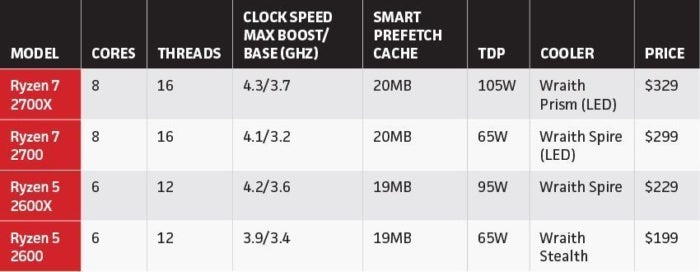 Rob Schultz/IDG
Rob Schultz/IDG2nd-gen Ryzen CPU specs.
Inside Ryzen 2nd-gen CPUs
The new 2nd-gen Ryzen chips are based refined CPU cores that AMD calls “Zen+.” While the first-gen Ryzen chips were built on a 14nm process, 2nd-gen Ryzen uses GlobalFoundries’s new 12nm process, which helped AMD increase the clock speed range over the original version.
The actual CPU micro-architecture hasn’t changed, but AMD said it has optimized the underlying circuits to decease latency. The L1 cache sees a 13 percent reduction and L3 shaves off 16 percent, while the L2 achieves a whopping 34 percent latency drop. AMD says it all adds up to about an 11 percent decrease in latency for main system RAM, too.
Internally, the chip arrangements are the same. The 8-core parts use dual CCX designs joined by AMD's Infinity Fabric technology. The 2nd-gen Ryzen 5 chips do the same, but with one core per CCX disabled.
Higher clock speeds with Precision Boost 2 and XFR2
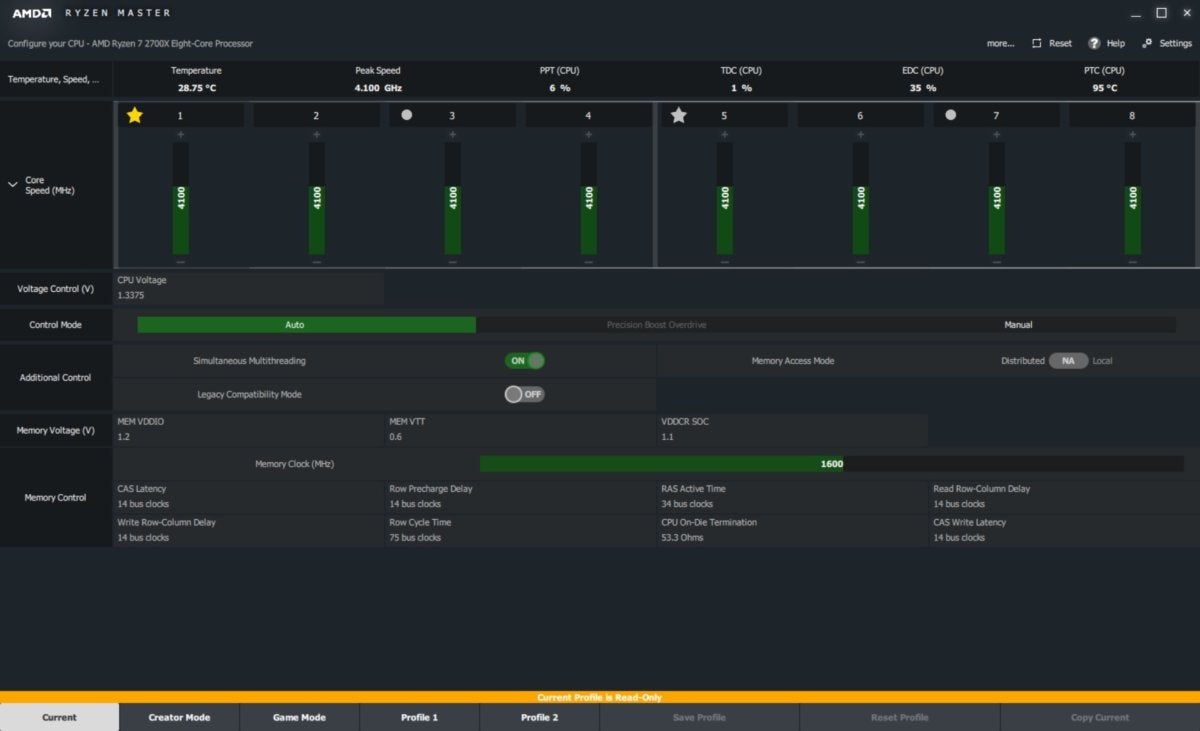 https://www.amd.com/en/technologies/cpu-cooler-solution
https://www.amd.com/en/technologies/cpu-cooler-solutionThe new Ryzen Master utility with 2nd gen Ryzen chips now lets you overclock each CCX. It also identifies the “best” core with a star and the second best core with a circle.
Although the various latency improvements offer performance benefits, much of 2nd-gen Ryzen's performance gains come directly from higher clock speeds. The original Ryzen 7 1800X topped out at 4GHz under boost conditions, and the 1700X maxed out at 3.8GHz. The Ryzen 7 2700X can hit 4.3GHz.
The higher overall clock speeds aren't the only improvement. Precision Boost 2, a greatly improved version of the original technology, now pushes 2nd-gen Ryzen processors to higher clock speeds on lighter loads that would have pushed the original Ryzen CPUs off their boost modes. In certain loads that used only three or four threads, AMD said the Ryzen 7 2700X would run nearly 500MHz faster than the Ryzen 7 1800X.
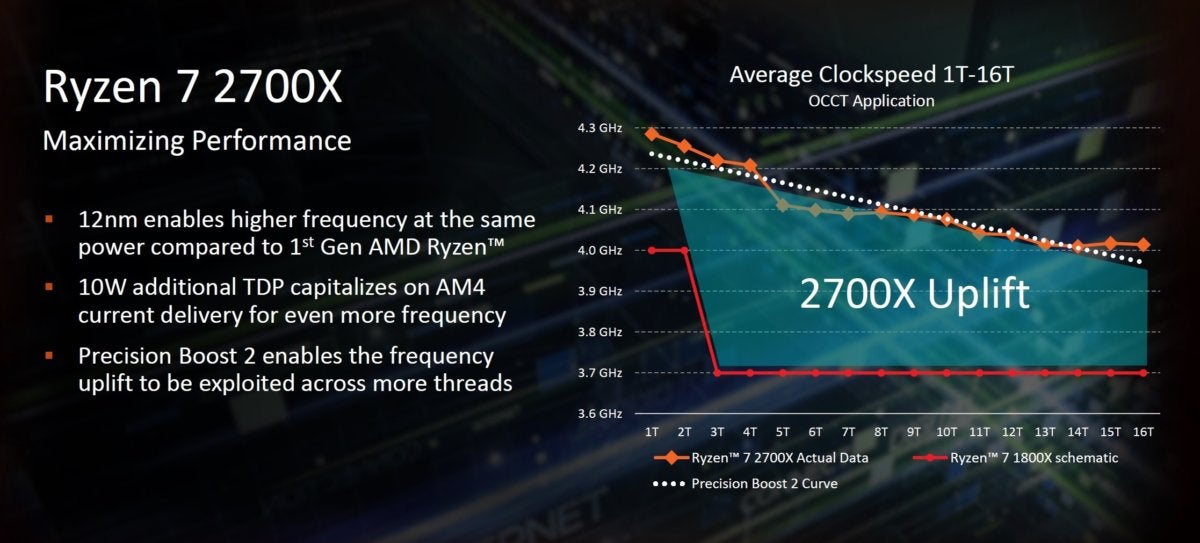 AMD
AMDMuch of the improvements in 2nd Ryzen comes from higher clock speeds on more cores.
The “bonus” clock boosts from XFR2 have also been improved. The original XFR (or Extended Frequency Range) could give the CPU a 100MHz bump beyond Precision Boost's maximum if you were running an efficient cooling solution, but only when two cores were being used. With XFR2, if the chip is cool enough, the 100MHz boost can be applied to all cores and threads, just like the upgraded Precision Boost 2.
Going from a standard 95-watt cooler to the Ryzen 7 2700X's included Wraith Prism with an ambient temperature of 90 degrees would yield 4 percent more performance thanks to XFR2, AMD said. Upgrading to a larger Noctua NH-D15S cooler ($90 on Newegg) and lowering the ambient temperature to 68 degrees would yield a 7 percent bump. This, AMD claims, all adds up to double-digit yields in performance in most tasks when compared to the first-generation parts.
AM4 motherboard compatibility
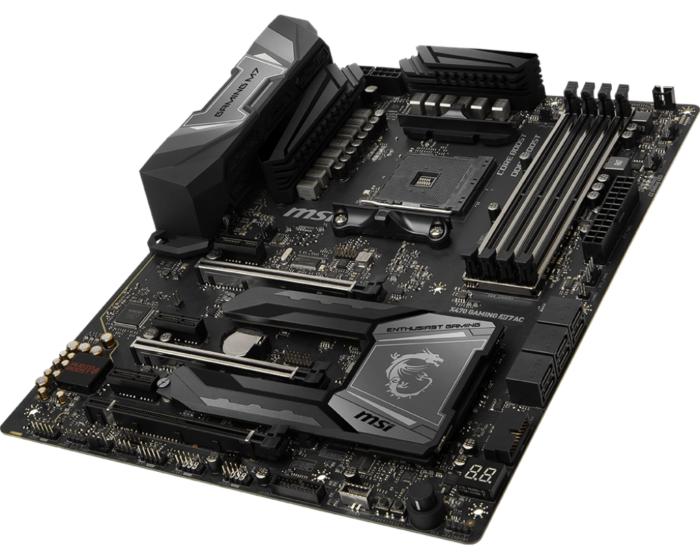 MSI
MSIMSI's X470 Gaming M7 AC is gaming because it has RGB lights.
The 2nd-gen chips are fully compatible with existing AM4 motherboards. AMD says it has been including rudimentary BIOS support for the CPUs for a few months, so the vast majority of motherboards on store shelves should be good to go out of the box. If the board won't boot though, you'll have to borrow a CPU from AMD and update the BIOS yourself.
New CPUs demand fresh motherboards though, and AMD is now offering an enthusiast-class X470 chipset that supplements the capabilities of the existing X370 chipset. For the most part, it's a minor update and doesn't offer any additional ports or expansion. Most boards based on the X470, however, will offer the latest voltage regulation modules and may hit slightly higher overclocks.
One new X470 feature that that pretty nifty is called StoreMI. StoreMI lets you pair a hard drive with an SSD to improve performance. In many ways, it's similar to what Intel does with Optane Memory modules.
[ Further reading: The best SSDs ]
And no, it's not just caching the data either. StoreMI is actually a "micro-tiering" technology that moves oft-used files to the speedy SSD and keeps stuff you don't touch on the much slower hard drive. It's not technically a cache because it doesn't flush your data when you power off. Most of it, anyway. StoreMI can also use up to 2GB of your system's RAM to cache hot data.
StoreMI is only found in 400-series AMD motherboards like the X470 options. If you're bummed because you're sitting there with your X370 or other 300-series AMD board, you can get the same feature—for a price. StoreMI is basically a licensed version of Enmotus' FuzeDrive which you buy for AMD's B350 and X370 motherboards.
AMD's secret weapon: The Wraith Prism cooler
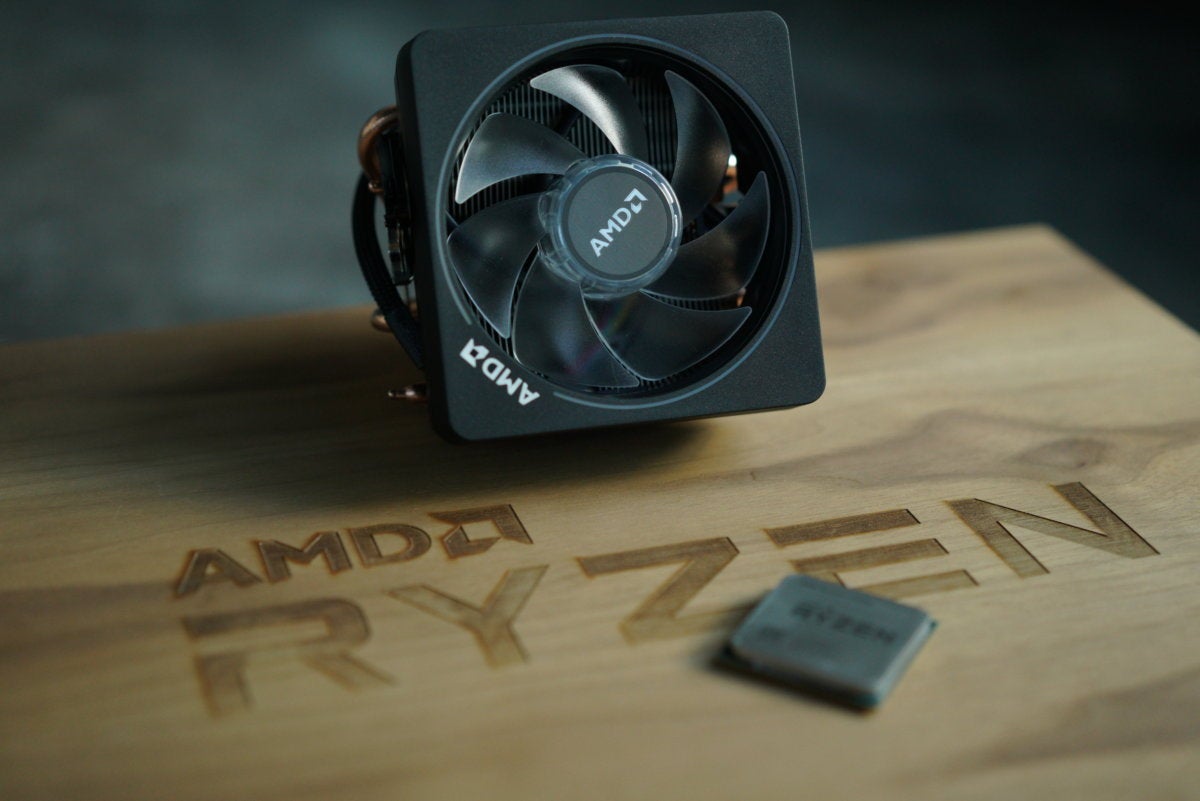 Gordon Mah Ung
Gordon Mah UngAMD includes a beefy new Wraith Prism cooler in the box with its top Ryzen 7 2700X.
The new Ryzen chips have a new approach to cooling, too.
AMD opted not to bundle CPU coolers with the first-gen “X”-branded Ryzen CPUs on the sound logic that, well, enthusiasts building high-end machines would just put a stock cooler on the shelf and install something better instead. AMD officials now say customers have been asking for its custom “Wraith” coolers even at the high-end, so it’s now including them in the box.
The top-end Ryzen 7 2700X includes the new Wraith Prism cooler, which features programmable RGB lights for the fan, logo, and fan cowling, as well as switchable performance modes. The default "L" position limits the fans to 2,800 rpm and 38dBA of noise, with a TDP rating of 116 watts. Flip it to “H” and the maximum speed goes up to 3,600 rpm, increasing the TDP rating to 124 watts. Noise also goes up to 47dBA on max speed.
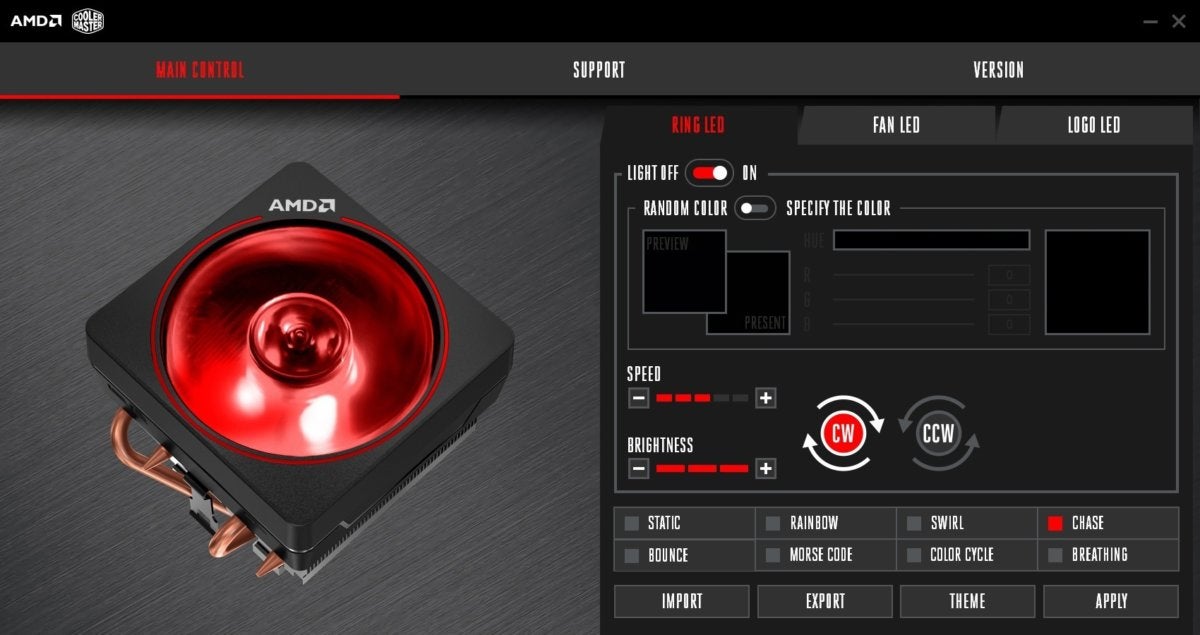 IDG
IDGThe Wraith Prism's customizable RGB lights works with popular motherboard utilities or with its own utility when plugged into a USB header.
You can control the three zones of RGB lighting with the USB header connected and AMD's free utility. If you choose to run it off your motherboard's proprietary lighting app, unfortunately, it works as only a single zone.
People used to the “just good enough” fans bundled with Intel CPUs might scoff at any freebie, but the Wraith Prism is a custom unit built to spec by Cooler Master. The reason it’s such a big deal here is its performance and included LED “bling” means you can chose to forego an aftermarket cooler that might cost $30 to $60 (though it can't compare to liquid coolers or premium air coolers). Since Intel doesn’t even include a cooler with its “K”-series parts, this puts Core i7 even further down the price hole against 2nd-gen Ryzen.
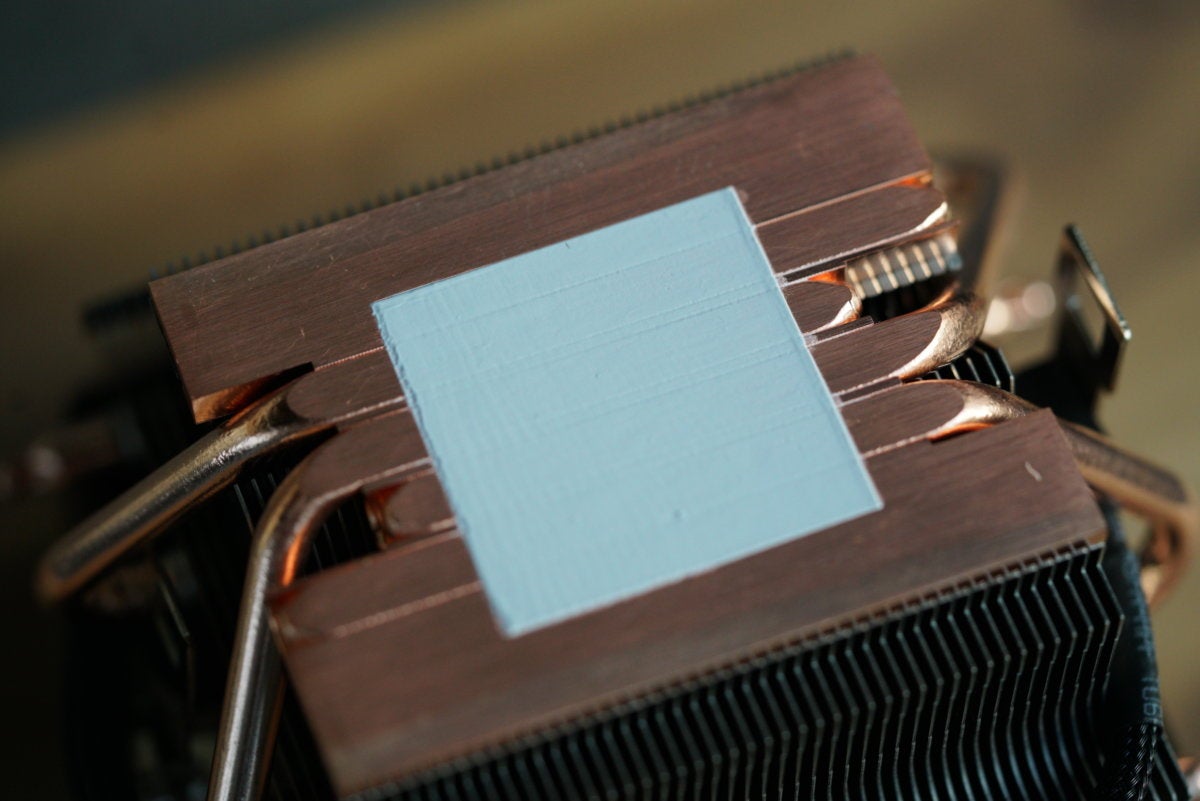 Gordon Mah Ung
Gordon Mah UngNo, it’s not “just” a Wraith Max with fancier lights. The Wraith Prism includes direct-contact heat pipes now.
Next page: Application performance benchmarks
https://www.pcworld.com/article/3268953/components-processors/2nd-gen-amd-ryzen-7-2700x-review.html